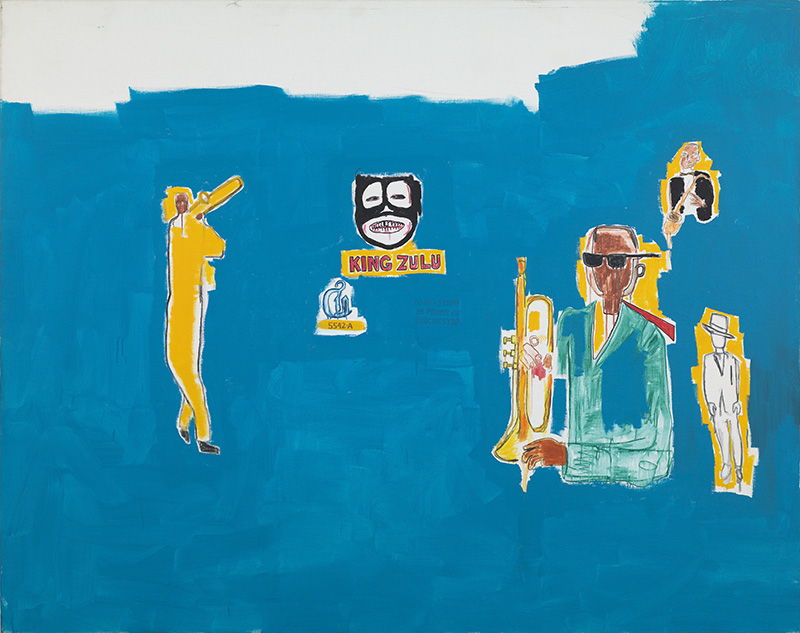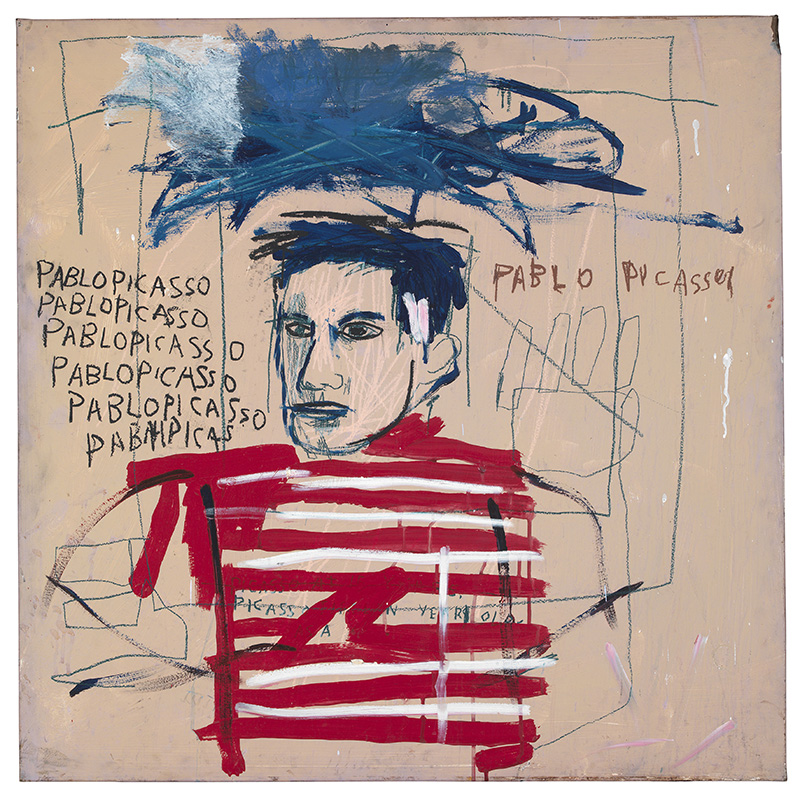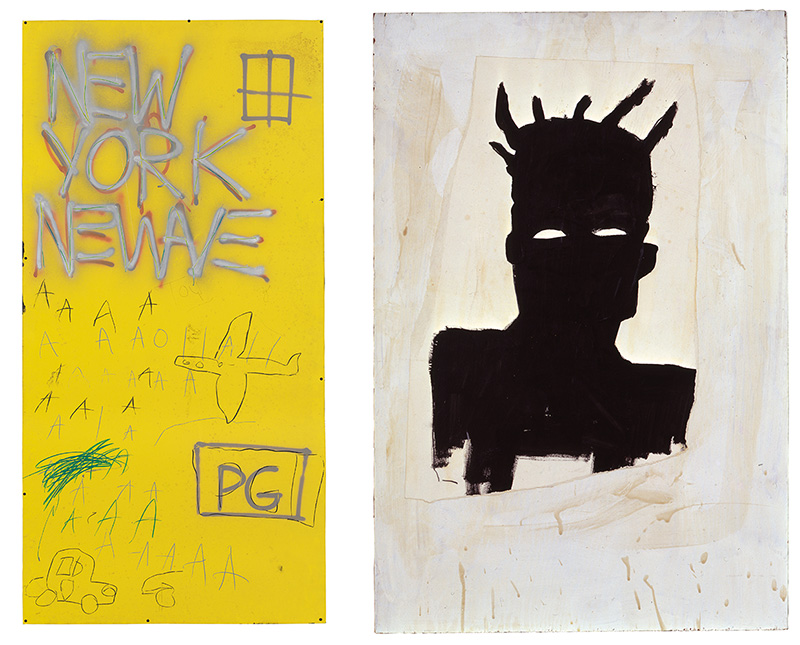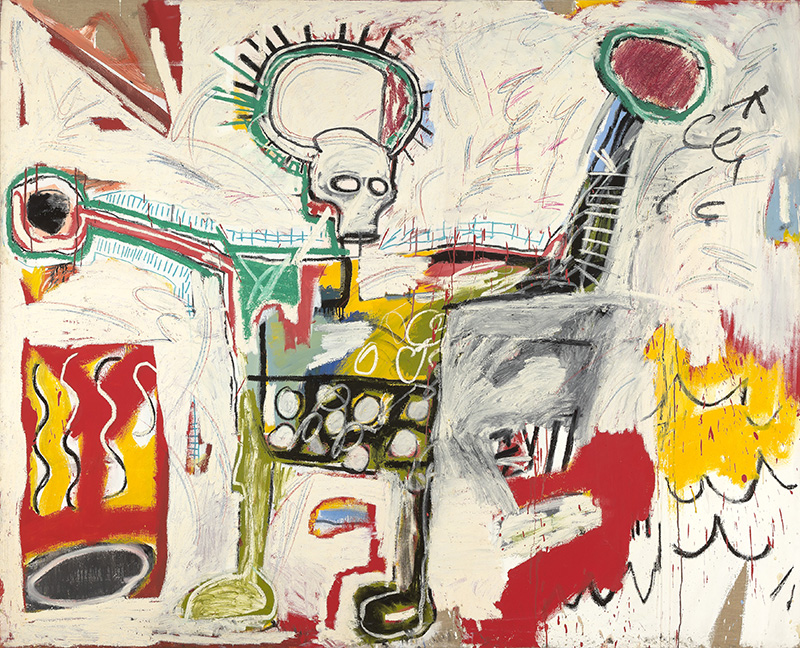ART-PRESENTATION: Jean-Michel Basquiat, Boom For Real,Part I
 After arguing with his friend Al Diaz, Jean-Michel Basquiat declared the death of SAMO© and wrote “SAMO© IS DEAD” on almost every wall of Lower Manhattan. Not long afterwards, in 1980, he sold his first painting to Debbie Harry, lead singer of the band Blondie, for $200 – and his career as an artist took off at an incredible pace. However, commercial success and financial security, did not secure him the privileges his fellow artists enjoyed. Nonetheless, there was no stopping Basquiat’s meteoric rise (Part II).
After arguing with his friend Al Diaz, Jean-Michel Basquiat declared the death of SAMO© and wrote “SAMO© IS DEAD” on almost every wall of Lower Manhattan. Not long afterwards, in 1980, he sold his first painting to Debbie Harry, lead singer of the band Blondie, for $200 – and his career as an artist took off at an incredible pace. However, commercial success and financial security, did not secure him the privileges his fellow artists enjoyed. Nonetheless, there was no stopping Basquiat’s meteoric rise (Part II).
By Dimitris Lempesis
Photo: Schirn Kunsthalle Frankfurt Archive
Featuring more than 100 works, the exhibition “Boom For Real” at the Schirn Kunsthalle in Frankfurt is the first to focus on Jean-Michel Basquiat’s relationship to music, text, film and television, placing his work within a broader cultural context. The exhibition traces Basquiat’s journey from his beginnings as an artist to his early death, aged 27, in 1988. Thematic sections illuminate the context in which his works were made and the story of their reception. It discusses questions such as the role of SAMO© and the influence of Downtown New York scene on Basquiat’s artistic development and the significance of his interdisciplinary art production, which has seldom been considered before. At the beginning of his artistic career, Basquiat created politically charged graffiti. In 1978, at the age of 17, he and his high-school friend Al Diaz operated under the pseudonym SAMO©, writing cryptic statements in black capital letters on the walls of buildings in New York. The graffiti were satirical attacks on the banality of American culture; their playful and rhythmical use of language soon made them unmistakable. This exhibition presents a large number of photographs by Henry Flynt, who documented this period. Basquiat had a sense of humour about his status as an artist. He was an autodidact who left school at the age of 16 and who never had any formal art training. Growing up in a cultured Brooklyn family, he regularly visited the New York museums as a child. He owned a comprehensive collection of artist’s monographs which he used as sources. Even in his earliest paintings and drawings Basquiat showed that he knew how to borrow from the visual vocabulary of 20th Century Western painting, while developing a style distinctively his own. Basquiat achieved his breakthrough with the presentation of his works in the group exhibition at P.S. 1 “New York/New Wave”. Works such as “Untitled” (1980), a sheet of metal over two metres high with spray-painted text: NEWYORK NEWAVE, are brought back together again at the Schirn for the first time since their original display. The works from his first solo exhibition in 1982 were full of explosive energy, layers of paint in intensive shades and scribbled, scratched arcs which resemble the movement lines in action cartoons. Basquiat was not only a painter and graphic artist; he was also a performer, actor, poet, musician and DJ. He was thus a direct disciple of the collective tendencies of the international art scene of the 1970s and early 1980s to work in a multidisciplinary way. Together with Michael Holman, Vincent Gallo and Nicholas Taylor, Basquiat played clarinet and synthesizer in the band Gray. Jazz and blues play an important role in his oeuvre. In many paintings he studied the history of black jazz musicians – as, for example, in the work “King Zulu” (1986). He was an early protagonist of the hip-hop movement alongside Fab 5 Freddy, Toxic and Rammellzee. Under his own label Tartown he produced the record “Beat Bop” (1983), for which he also designed the cover. In the independent film “New York Beat” written by Glenn O’Brien (later released as Downtown 81), Basquiat was chosen for the main role and played the artist he would later become. The exhibition brings this era to life once more with the films “New York Beat” (1980-81), excerpts of Basquiat’s appearances in the programme TV Party (1979–1982) as well as photographs of key figures from the Downtown scene such as Madonna, Debbie Harry, Grace Jones, Maripol and Andy Warhol. In the early 1980s Basquiat produced numerous collages, postcards and objects together with Keith Haring, Jennifer Stein, John Sex and others. The exhibition also shows a refrigerator “Untitled (Fun Fridge)” (1982) and the vase “Untitled” (1982. On the initiative of Bruno Bischofberger, Basquiat made the acquaintance of Andy Warhol; they would create a series of joint works with Francesco Clemente. Basquiat and Warhol continued to cooperate between 1984 and 1985. The Schirn presents their collaborative piece “Arm and Hammer II” (1984) as well as and the double portrait “Dos Cabezas” (1982), which Basquiat painted immediately after his first meeting with Warhol. Also in the exhibition are is also presenting his works “Untitled (Pablo Picasso)” (1984) and “Leonardo da Vinci’s Greatest Hits” (1982). Basquiat recorded his thoughts and ideas in lined notebooks. The exhibition has assembled a selection of these books with poems, sketches, quotations, text fragments and addresses which served as both diaries and sources of inspiration.
Info: Schirn Kunsthalle Frankfurt, Römerberg 6, Frankfurt, Duration: 16/2-27/5/18, Days & Hours: Tue & Fri-Sun 10:00-19:00, Wed-Thu 10:00-22:00, www.schirn.de





